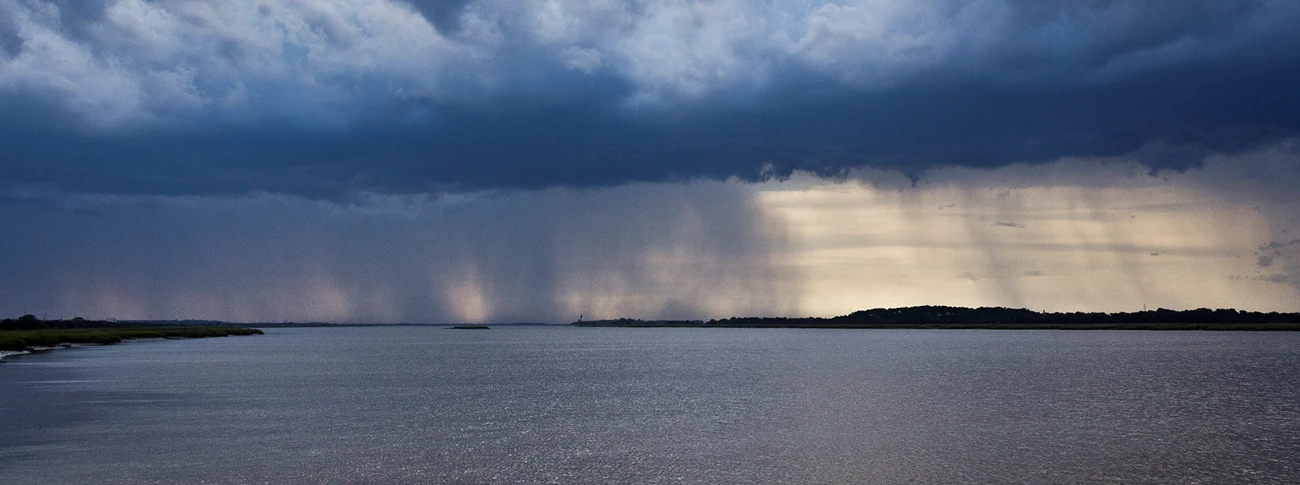|
Fort Pulaski National Monument is located along the South Atlantic coastline east of Savannah, Georgia. The park can feature dynamic and changing weather patterns throughout the year. Weather conditions can change unexpectedly and without warning. Be prepared by checking local weather reports and forecasts before traveling to the national monument.
Fort Pulaski National Monument utilizes several services and mechanisms to share important weather information with the public. Loading weather forecast... Weather TrendsSavannah has a humid sub tropical climate with over two hundred days of sunshine each year. Summers (May through September) are typically hot, bright and humid with afternoon thunderstorms common. Temperatures often range from the lower 70s to the mid 90s F. Spring (March through mid-May) and Autumn(October through late November) can be quite pleasant with temperatures ranging from the upper 50s into the 80s F. The Winter months (December through March) are usually dry. Temperatures can be cooler than one would expect, ranging from the upper 30s through the 60s F generally, though sudden cold snaps can occur. Hazardous WeatherFort Pulaski National Monument is open every day of the year except New Year's Day, Thanksgiving Day, and Christmas Day. However, there are some periods of severe weather that may temporarily require us to close some or all of the Park's operations. Hot and humid in summer, mild to chilly and breezy in winter. Rainy periods throughout the year. Wear comfortable sportswear. Walking shoes and insect repellant are recommended. We encourage our visitors to drink plenty of water while visiting our site. Several water refill stations located near our restrooms offer visitors the option for added relief. Dehydration can be common in severe, hazardous heat conditions. Sunshine: The sun shines bright here, often burning our visitors. Sunburn can occur quickly and can be quite severe. We suggest using a variety of sun protection, including sunscreen, light loose clothing and UV protective sunglasses. Heat indexes (temperature + humidity) can often exceed 105 F during the summer months. High heat indexes may limit some of our interpretive programs. Thunderstorms & Lightning: When it rains in Savannah, it usually pours! Florida's thunderstorms are beautiful, powerful and potentially dangerous. The majority of Georgia's thunderstorms come in the summer months, chiefly during the afternoon. Formed by the combination of humid air and hot temperatures they create strong updrafts which form massive clouds filled with electrical and kinetic energy. Typically short-lived, they can drop several inches of rain in a short period of time. The upper level of Fort Pulaski may close due to lightning. Hurricanes: June 1 through November 30 is Hurricane Season in Florida. Hurricanes and Tropical Storms can affect local weather conditions hundreds of miles out from their center of rotation. Be sure to check the tropical weather forecast for the period you plan to visit. A Hurricane Watch indicates the possibility that hurricane conditions could be experienced within 36 hours. A Hurricane Warning indicates that sustained winds of at least 74 mph are expected within 24 hours or less in a particular area. Park policy requires us to close the Park when Tropical Storm/Hurricane conditions are expected within 36 hours. 
NPS |
Last updated: October 9, 2020

